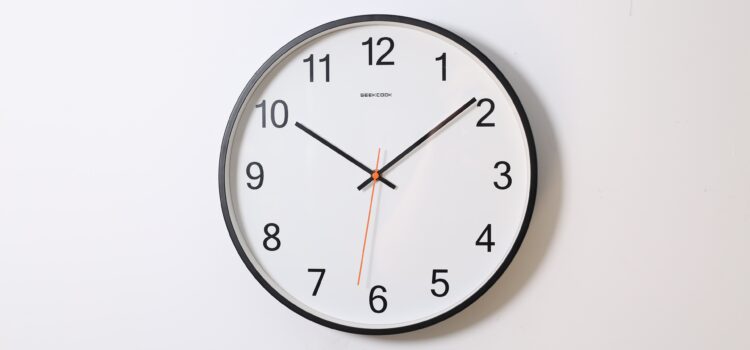

This article is an excerpt from the Shortform book guide to "Atomic Habits" by James Clear. Shortform has the world's best summaries and analyses of books you should be reading.
Like this article? Sign up for a free trial here .
What is the two-minute rule of behavior change? How can it help you make positive behavior changes and stick to them over the long-term?
The two-minute rule is a simple principle of behavior change that states that a new habit should take no more than two minutes to perform. The point of the two-minute rule is not to only do the easiest thing. The point is to make a habit of showing up for your desired goal and identity.
Keep reading to learn about the two-minute rule of behavior change.
The Two-Minute Rule
One of the biggest ways you can fail at forming a new habit before you begin is by starting too big. If you break the system of a new habit down into smaller pieces, you will have more success in maintaining that habit. When the first step is easy, it’s more likely your decisive moment will be a positive one that snowballs into more positive behaviors in the near and distant future.
Committing to two minutes of activity is easier than trying to surmount the whole activity at once. Once you determine what actions are required in your system to reach your goal, rate them from easiest to hardest and commit to performing the easiest for two minutes.
- “I will read more” becomes “I’ll read one page a day.”
- “I will walk for 20 minutes” becomes “I will put on my walking shoes.”
- “I will do the laundry” becomes “I will put the dirty clothes in a basket.”
A new habit should be easy, so do the easy part first. What follows might be difficult or challenging, but once momentum is built with the gateway habit, you are more likely to keep going.
Let’s say your end goal is to run a marathon. This goal encompasses the identity of someone who runs. The habit you wish to form is to run more often. You break your system into separate steps, but if you make the error of starting too big, your actions may look like the following:
- Step 1: Run for 20 minutes after returning home from work every day.
- Step 2: Increase running time by 10 minutes every week.
- You succeed in running for 20 minutes for two days in a row, but by Day 3, you’re too tired and don’t feel like running. On Day 4, you feel guilty for not running the day before, which makes you feel lazy, so you don’t run again.
Starting with a big step like running every day was hard to maintain because it required effort, and the moment that effort outweighed your motivation, you stopped. However, breaking down the system into two-minute increments will help you keep casting votes for your desired identity without a massive requirement of effort.
- Step 1: Change into running clothes when you get home.
- Step 2: Put on running shoes.
- Step 3: Walk to the sidewalk.
- Step 4: Jog for two minutes.
You may not be able to motivate yourself for a full run, but you can surely motivate yourself enough to change clothes. That may be as far as you get that day, but you’ve triggered the brain to start forming a pathway toward your future goal by getting into the habit of changing into jogging clothes after work. Over time, putting on workout clothes becomes a ritual, which serves as a cue for the larger response of going for a run. With continued repetition, the snowball effect will take hold, and you will continue taking the necessary steps until you are in shape for your marathon.
The point of the two-minute rule is not to only do the easiest thing. The point is to make a habit of showing up for your desired goal and identity. The biggest enemy to progress is the anticipation of work. The two-minute rule keeps you below the threshold of effort, which allows you to keep succeeding in accomplishing the task. As you generate enough days of performing the two-minute step, your identity as the person you want to be strengthened, which motivates you to keep moving forward, two minutes at a time.
If the two-minute rule seems gimmicky or foolish, try restricting your behaviors to two minutes, instead of allowing the two minutes to snowball into more.
- You are only allowed to run for two minutes before you have to go home.
- After enough reps, you start to feel like you want to do more, but you are required to stop.
- You will now become the champion of running for longer periods of time when you begin to feel dissatisfied with your two-minute restriction.

———End of Preview———
Like what you just read? Read the rest of the world's best book summary and analysis of James Clear's "Atomic Habits" at Shortform .
Here's what you'll find in our full Atomic Habits summary :
- The 4 Stages of Habit Formation you can use to transform your life
- How more than half of your daily actions are automatic
- Why some habits stick and why others won't






